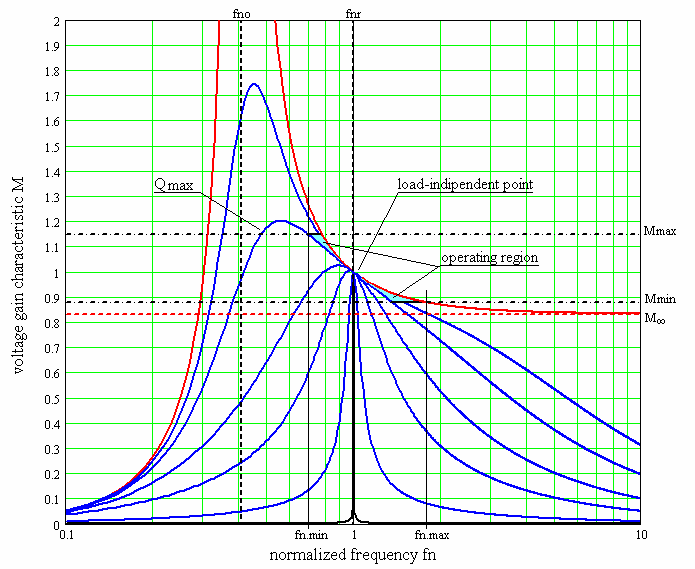Are you designing your own controller/algorithm? Or are you using an off-the-shelf controller from TI, NXP, ST, etc?
If the latter, don't worry about it too much...they will run at some burst-mode duty cycle to keep the output under control. Burst mode control is usually hysteretic so these controllers should theoretically allow an infinitesimally small duty cycle (if necessary). Without a "discontinuous" burst mode function at light load, the LLC switching frequency tends towards a very high value. In some cases, the natural switching frequency of the tank might even be beyond the switching frequency capability of the gate driver, 500KHz for example. Obviously this is not good from a functional perspective, and is even worse from a switching loss perspective (as alluded to above).
We blew up our circuit while running tests with open loop (manually set frequency) control.
A normal/off-the-shelf converter will, as you say, possibly try to increase operating frequency towards infinity or do burst mode at low load to keep gain down if the input-output operating condition is such that M<1 is required for regulation.
This issue could potentially be avoided if you can guarantee the system stays in a state where M>1 regulation is required (sub resonant operation, f_sw<f_r)? Actually not sure what happens to the reactive energy when operating sub-resonant with no load. I guess it should be self-limiting but again, not good experiences there. LTSpice does not want to run the non-linear time-domain simulation for low loads.
[Edit]
To try
explaining the behaviour more visually rather than mathematically, I'll go over what the plot Miyuki posted shows.

The x-axis is the \$f_n\$ "normalised frequency" i.e. the switching frequency as a fraction of the resonant frequency. The y-axis is the \$M\$ "characteristic voltage gain" which is basically the voltage gain without any gain from the transformer turns ratio. Each blue curve represents the frequency-gain response for a different load condition; the lower curves are for higher loads (lower load resistance \$R_{ac}\$). The red curve represents the no-load limit (infinite load resistance).
We can figure out our gain at any given load condition by looking for (or plotting) our nearest load curve then reading off the gain at our normalised switching frequency.
To figure out our operating region we first place our \$M_{min}\$ and \$M_{max}\$ horizontal lines which are the minimum and maximum gains required to achieve regulation for our required input and output voltage ranges. We then plot the \$M\$ curve for our maximum load (minimum \$R_{ac}\$). The region (shaded in green) between our maximum load curve, the red \$M_{\infty}\$ curve and bounded by our \$M_{min}\$ and \$M_{max}\$ horizontal lines is the possible values for frequency and gain for our system.
If our desired minimum gain is too low, then that \$M_{min}\$ lines drops further below the red \$M_{\infty}\$ curve meaning the operating region will extend to excessively high frequencies. If our desired maximum gain it too high, then we can go beyond the "peak" of our maximum load curve and we will not be able to achieve maximum required gain at max load. If gain is not properly controlled e.g. we only using a f_min to bound our operating region (no \$M_{max}\$ control) then gain can also become excessive at low load, \$f_n < 1\$. Which is probably what happened to me?
Also note this plot is for a particular resonant inductance to transformer magnetising ratio \$ L_n = 5\$ where \$ L_n = \frac{L_m}{L_r} = \frac{1}{\lambda} \$ some literature uses \$\lambda\$ instead of \$ L_n\$. For different inductance ratios, the "shape" of the set of curves will change. Typical ratios range from \$ L_n \$ 3 to 15.
This plot comes from/is used in ST's
AN2450 Fig 3. This plot and equivalent plots are ubiquitous in LLC study/design.